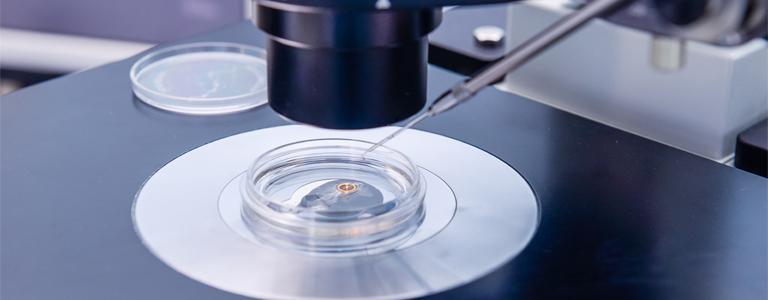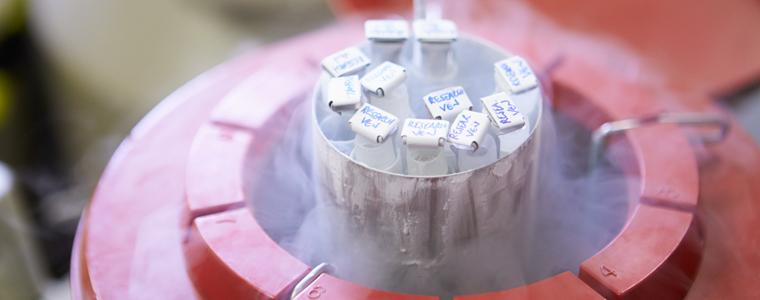Preimplantation Genetic Testing (PGT)?
23-02-2020 09:44 PMPreimplantation Genetic Testing (PGT)?
It is now possible to test embryos created by In Vitro Fertilization (IVF) for genetic diseases by utilizing Preimplantation Genetic Testing (PGT). The primary goal of PGT is to identify genetic defects in embryos created through IVF before transferring them to the uterus, thus decreasing pregnancy terminations and births with genetic abnormalities.
There are three types of Preimplantation Genetic Testing that can be performed:
-
Preimplantation Genetic Testing for aneuploidy (PGT-A)?
Developed embryos are often aneuploidy, which means that they have a changed number of chromosomes or chromosomal abnormalities, and the incidence of this event increases with the maternal age (65% in women aged 36-40 years; Willem Verpoest et al 2018). If embryos are assessed only morphologically, there is a likelihood of selecting aneuploid embryos for the transfer into the woman’s uterus. The transfer of genetically incompetent embryos results in no pregnancy or early pregnancy loss before the 12th week of gestation. Furthermore, some chromosomal abnormalities are compatible with the development of the fetus, which may result in the birth of a child with Down syndrome (trisomy 21), Edwards syndrome (trisomy 18) or other chromosomal abnormalities, which are characterised by mental and physical retardation of the newborns. With Preimplantation Genetic Testing for Aneuploidy (PGT-A), only those developed embryos with a bigger chance to implant in the uterus and also successfully continue to develop are selected for the transfer.
PGT-A indications:
-
Women over 35 years old.
-
Repeated implantation failure ≥3 embryo transfers with high-quality embryos.
-
Repeated miscarriages ≥3 miscarriages
-
Couples who have been pregnant or have had children carrying genetic disorder.
-
Preimplantation Genetic Testing for monogenic diseases (PGT-M)?
For families in which monogenic hereditary diseases (which occur due to changes in a single gene) are passed down from generation to generation or a similar disorder has already been detected in one of the children. IVFMD offers patients a technique to analyze embryonic cells in order to determine which of the embryos may not inherit the mutation (or mutations) of the gene, thus allowing to maintain the pregnancy, knowing that the further spread of the disease in the family has been stopped. In order to carry out the given analysis, preimplantation genetic testing for monogenic diseases (PGT-M) allows to select viable embryos at an embryonic level, thus increasing the chance of delivering a healthy baby.
PGT-M indications:
-
Autosomal recessive disorders: Beta-thalassemia, Alpha-thalassemia, …
-
Autosomal dominant diseases: Myotonic dystrophy, Huntington’s disease, …
-
X-linked (connected with the X chromosome) transmitted disorders: Hemophilia, Fragile X chromosome syndrome, …
-
Human leukocyte antigen (HLA) typing of embryos, so that the child's HLA matches an affected sibling, availing for cord-blood stem cell donation. The HLA matching can be combined with the diagnosis for monogenic diseases such as Fanconi anaemia or beta thalassemia in those cases where the ailing sibling is affected with this disease.
-
Preimplantation genetic testing for chromosomal structural rearrangements (PGT-SR)?
Chromosomal rearrangements are changes from the normal size or arrangement of chromosomes, which are the structures that hold the genetic material. People with chromosome rearrangements are at an increased risk of producing embryos with the incorrect amount of genetic material, which typically do not lead to a successful pregnancy.
Preimplantation genetic testing for chromosomal structural rearrangements (PGT-SR) can be performed to improve the chance of establishing a healthy pregnancy. PGT-SR involves testing embryos created through in vitro fertilization (IVF) and then transferring only normal embryos.
PGT-SR indications:
-
Inversions are chromosome rearrangements that involve only one chromosome. In an inversion, a segment of a chromosome is flipped and reinserted upside down. People with an inversion may create embryos with missing or duplicated segments of chromosomes.
-
Reciprocal translocations occur when pieces of genetic material break off from two different chromosomes and swap places. People that carry a balanced translocation can create embryos that have either the same balanced translocation, the unbalanced form of the translocation (where there is a gain or loss of chromosomal material), or a completely normal set of chromosomes. If one parent is a carrier of a reciprocal translocation, about 80% of resulting embryos will contain an incorrect amount of genetic material.
-
Robertsonian translocationoccurs when two chromosomes join together to form one large chromosome, giving an overall chromosome count of 45 instead of 46. This pairing occurs most commonly between chromosome numbers 13/14 and 14/21, and usually results in conditions such as Translocation Down syndrome, trisomy 13, or uniparental disomy (UPD).
Process of PGT treatment:
Performing the biopsy when the embryo has become a blastocyst is more technically challenging. However, in a blastocyst, we are specifically able to biopsy from the part of the embryo called trophectoderm that will become the placenta, and we can get more than 1 cell, which allows for greater accuracy in the genetic testing and not to harm the inner cell mass which will become the fetus. Furthermore, embryo viability at the blastocyst stage is better than cleavage stage embryos. Depending on how quickly the test is run, the embryo may have to be frozen while we wait for the results.
These methods make it possible to choose the best and most viable genetically competent embryos and only one embryo is transferred. However, the test is not 100% accurate due to mosaicism. The term mosaicism refers to the presence of more than just one cell line (both euploid and aneuploidy cells), which presents different chromosome counts.
PGT steps:

Ongoing pregnancies resulting after PGT during IVF should always be followed by chorionic villus sampling (10-12 weeks) or amniocentesis (15-18 weeks) to confirm a genetically normal fetus. Either of these follow up procedures (which carry their own risks), is accordingly necessary in order to make that determination.

















